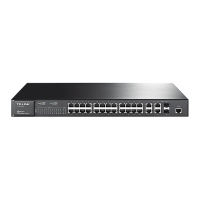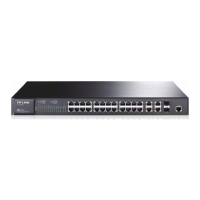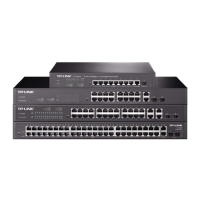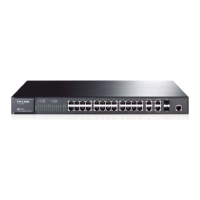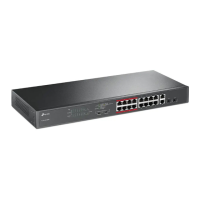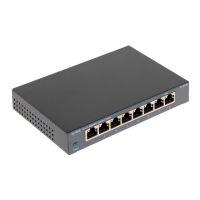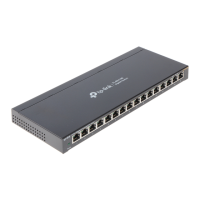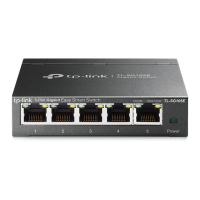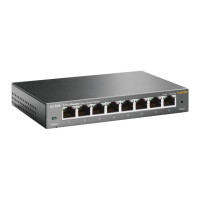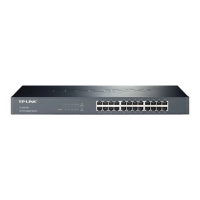supplicant system. Note that the client program must support the 802.1X authentication
protocol.
(2) Authenticator System: The authenticator system is usually an 802.1X-supported network
device, such as this TP-LINK switch. It provides the physical or logical port for the
supplicant system to access the LAN and authenticates the supplicant system.
(3) Authentication Server System: The authentication server system is an entity that
provides authentication service to the authenticator system. Normally in the form of a
RADIUS server. Authentication Server can store user information and serve to perform
authentication and authorization. To ensure a stable authentication system, an alternate
authentication server can be specified. If the main authentication server is in trouble, the
alternate authentication server can substitute it to provide normal authentication service.
¾ The Mechanism of an 802.1X Authentication System
IEEE 802.1X authentication system uses EAP (Extensible Authentication Protocol) to exchange
information between the supplicant system and the authentication server.
(1) EAP protocol packets transmitted between the supplicant system and the authenticator
system are encapsulated as EAPOL packets.
(2) EAP protocol packets transmitted between the authenticator system and the RADIUS
server can either be encapsulated as EAPOR (EAP over RADIUS) packets or be
terminated at authenticator system and the authenticator system then communicate with
RADIUS servers through PAP (Password Authentication Protocol) or CHAP (Challenge
Handshake Authentication Protocol) protocol packets.
(3) When a supplicant system passes the authentication, the authentication server passes the
information about the supplicant system to the authenticator system. The authenticator
system in turn determines the state (authorized or unauthorized) of the controlled port
according to the instructions (accept or reject) received from the RADIUS server.
¾ 802.1X Authentication Procedure
An 802.1X authentication can be initiated by supplicant system or authenticator system. When the
authenticator system detects an unauthenticated supplicant in LAN, it will initiate the 802.1X
authentication by sending EAP-Request/Identity packets to the supplicant. The supplicant system
can also launch an 802.1X client program to initiate an 802.1X authentication through the sending
of an EAPOL-Start packet to the switch,
This TP-LINK switch can authenticate supplicant systems in EAP relay mode or EAP terminating
mode. The following illustration of these two modes will take the 802.1X authentication procedure
initiated by the supplicant system for example.
(1) EAP Relay Mode
This mode is defined in 802.1X. In this mode, EAP-packets are encapsulated in higher level
protocol (such as EAPOR) packets to allow them successfully reach the authentication server.
This mode normally requires the RADIUS server to support the two fields of EAP: the
EAP-message field and the Message-authenticator field. This switch supports EAP-MD5
authentication way for the EAP relay mode. The following figure describes the basic EAP-MD5
authentication procedure.
160
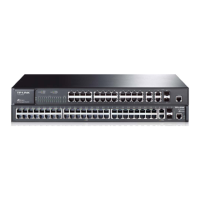
